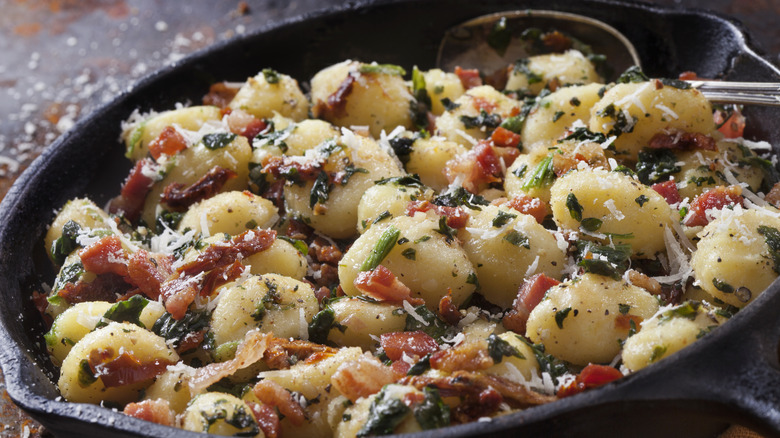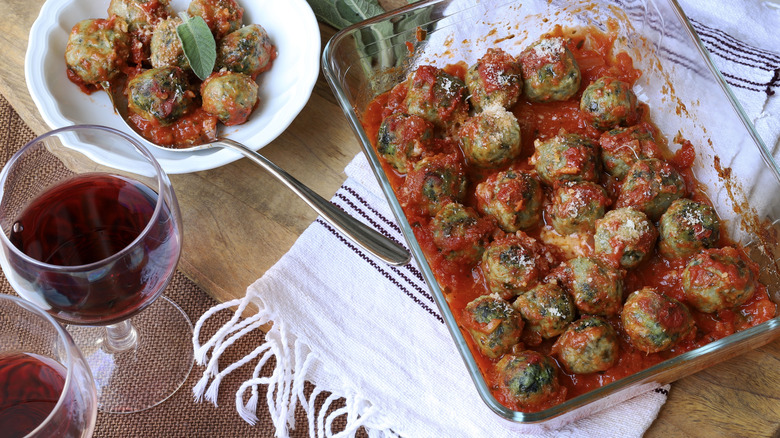What's The Difference Between Gnocchi And Gnudi?
Gnocchi is a well-known potato dumpling dish from Italy. These fluffy little pillows of carbohydrate goodness are usually boiled (or fried) and served in a sauce with some protein. They're pretty easy to make too, even without eggs. Just don't boil store bought gnocchi. There's a similar recipe that isn't quite as popular, though. Tuscany's best kept secret: gnudi. It's pronounced noo-dee and actually means "naked" in Italian. Think of it like ravioli filling without the pasta, so it's naked. Cue "the more you know" music. Given that gnudi and gnocchi sound similar and start with a silent "g", they must be the same right? Well, no.
Gnudi is primarily made from ricotta cheese (use the rest to make a simple appetizer). It's sometimes also made with spinach. You basically mix parmesan, ricotta, butter, flour, and eggs and then form the mix into little balls which chill for a while in the fridge. Once they're set, you boil them off and serve with sauce. They are extremely delicate and fluffy, even more so than gnocchi. This rustic Tuscan dish is the perfect date night dish to try, since it'll be new but familiar. Whereas gnocchi is made primarily from potatoes and flour, gnudi are straight cheese. If you're a cheese loving potato fiend like me, it seems like making both in the same night would be heaven — if a little labor intensive.
How to dress gnudi
If you're taking the time to handcraft gnudi, it's probably a good idea to know what goes well with the dish. The classic sauce for Tuscan gnudi is a butter sage sauce. The easiest way to make butter sage sauce is to melt butter in a pan with about 20 leaves of fresh sage until they crisp up and the flavor and aroma has seeped into the butter. Add just a splash of the leftover gnudi water and let the sauce thicken and set. Serve it over the gnudi with some sage leaves. Delicious.
If you need a wine pairing, the best rule to live by is "that which grows together, goes together." This means if you're making a Tuscan dish, the easiest pairing will be Tuscan wine. If you prefer white wine, try to get a hold of Vermentino Toscana, it's a dry white that's crisp and refreshing. It has a good amount of acidity to it which cuts through the fat of the cheese while its citrus and floral notes pair well with the butter sage sauce. If you prefer red, go with a cheap, young chianti which is also Tuscan and made from a grape called sangiovese. Ask the wine clerk for chianti aged in cement or fiberglass, as this retains the juicy, bright berry notes found in young chianti.

